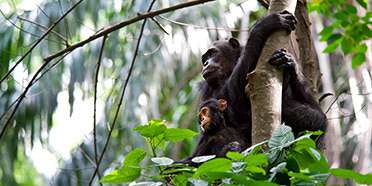
Safari Tours to Gombe NP
-
![8-Day Serengeti Safari & Chimpanzee Trekking]()
8-Day Serengeti Safari & Chimpanzee Trekking
$2,849 pp (USD)
Kenya, Rwanda, Tanzania & Uganda: Private tourBudgetCamping & Tented Camp
You Visit: Dar Es Salaam (Start), Tarangire NP, Serengeti NP, Ngorongoro Crater, Gombe NP, Arusha (End)

Colours Africa Tours and Safaris
5.0/5 – 205 Reviews
-
![4-Day Trekking Home of Chimpanzee]()
4-Day Trekking Home of Chimpanzee
$1,649 pp (USD)
Tanzania: Private tour
Mid-range Tented Camp & HotelYou Visit: Arusha (Start), Gombe NP, Kigoma (Town), Arusha (End)

See Endless Adventures Tanzania
5.0/5 – 53 Reviews
-
![10-Day Chimpanzees at Gombe- Mahale Mountain Katavi Park]()
10-Day Chimpanzees at Gombe- Mahale Mountain Katavi Park
$4,395 pp (USD)
Tanzania: Private tourBudgetGuest House & Hotel
You Visit: Dar es Salaam (Start), Gombe NP, Mahale Mountains NP, Katavi NP, Mbeya (City), Dar es Salaam Airport (End)

Go Giraffe Safaris
5.0/5 – 24 Reviews

 Tanzania Parks
Tanzania Parks










